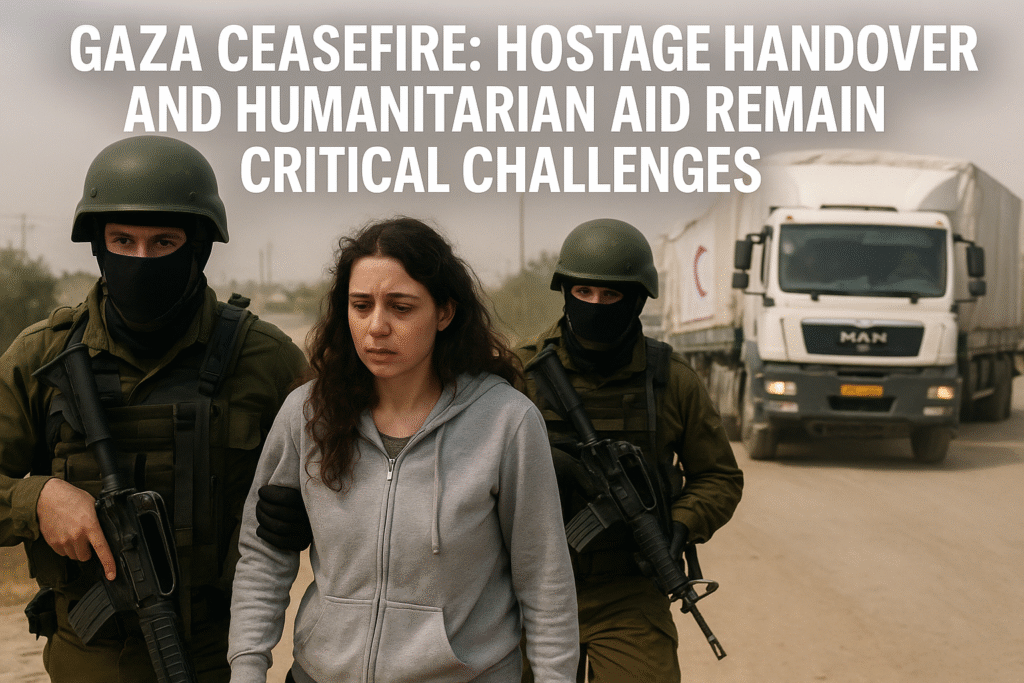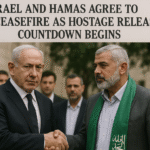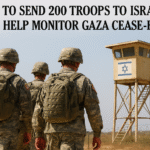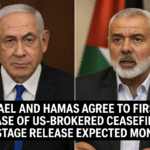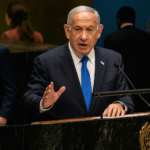By Harshit | October 11, 2025 | Jerusalem
Hostage Release Set to Begin Under Complex Conditions
As the US-brokered Gaza ceasefire enters its second day, attention is focused on the release of Israeli hostages. Under the terms of the agreement, Hamas has a 72-hour window to return hostages to Israel. While the exact timeline remains fluid, up to 48 hours remain before the deadline, and international officials warn of the operation’s complexity.
The International Committee of the Red Cross (ICRC) will act as a neutral intermediary, mirroring its role in prior ceasefire handovers. An ICRC official, speaking during earlier operations, described these transfers as “very complex,” citing risks from unexploded ordnance, destroyed infrastructure, and large crowds. Unlike previous ceremonies, which were highly choreographed, this round is set to proceed “without any public ceremonies or media coverage,” according to documents shared with Israeli media.
Medical teams and social workers are prepared to receive the hostages at reception points near the Gaza border. Deputy Chief of the Israel Defense Forces medical corps, Col Dr Avi Banov, described the initial care process: “We start with vitamins, something small to eat and drink, and then [reuniting them with] the families.” Following that, hostages are transported by specially adapted helicopters to hospitals for medical assessment.
Among the 48 Israeli hostages still in Gaza, about 20 are believed to be alive. Notable individuals include Ariel Cunio, abducted from Kibbutz Nir Oz, and twin brothers Gali and Ziv Berman from Kibbutz Kfar Aza. Previous ceasefires saw dozens of hostages freed, highlighting the high-stakes nature of the current operation.
Humanitarian Aid Faces Logistical Hurdles
Alongside the hostage situation, the ceasefire’s humanitarian component is proving equally challenging. Under the first phase of the agreement, roughly 600 aid trucks are scheduled to enter Gaza daily. The UN’s Palestinian aid agency, Unrwa, reports sufficient food for three months, yet distribution remains stalled.
Juliette Touma, Unrwa’s communications director, emphasized the urgency: “Distributing the aid is absolutely critical in controlling the spread of famine.” Earlier in 2025, famine conditions were confirmed in Gaza City and surrounding areas, underscoring the critical need for immediate relief.
The Rafah crossing, a crucial entry point for trucks, is expected to reopen on Tuesday, with alternating entry and exit for personnel and aid, according to Italy’s Defence Minister Guido Crosetto. Italy and the EU Border Assistance Mission (Eubam) are working to restore full logistical operations, which have been disrupted multiple times during the conflict.
Unicef officials report that aid has not yet surged, despite 1,300 trucks staged outside Gaza, highlighting the operational challenges still to be resolved. “We’re ready, we’ve got 1,300 trucks outside as Unicef and our UN partners have many more. We just need those conditions in place to begin that surge in aid,” said Tess Ingram from Unicef.
Return of Displaced Gazans
Displaced Gazans are cautiously returning to northern areas, navigating destroyed infrastructure and limited resources. Esraa Shaheen, a 24-year-old from northern Gaza, described her family’s attempt to resettle: “They say there is no infrastructure at all — the roads are closed, there is no water, bad signal. We think it might be two weeks until we can return.” Many are hesitant to celebrate the ceasefire, fearing it may not hold.
Medical teams continue to recover bodies under rubble, with more than 100 fatalities confirmed in recent days and thousands more expected. Families search through debris to salvage remnants of their homes and possessions, highlighting the profound humanitarian impact of the conflict.
Next Steps Hinge on Political Leadership
The first phase of the ceasefire, largely facilitated by US President Donald Trump’s intervention, represents the initial stage of a broader 20-point plan for Gaza. While hostages and prisoners are being addressed, questions about governance, Israeli withdrawal, and the future role of Hamas remain unresolved.
Observers note that momentum is contingent on continued high-level engagement, and both sides may seek to stall further negotiations. The coming days will test the durability of the ceasefire, the efficiency of humanitarian aid, and the ability of international actors to manage the complex logistics on the ground.

